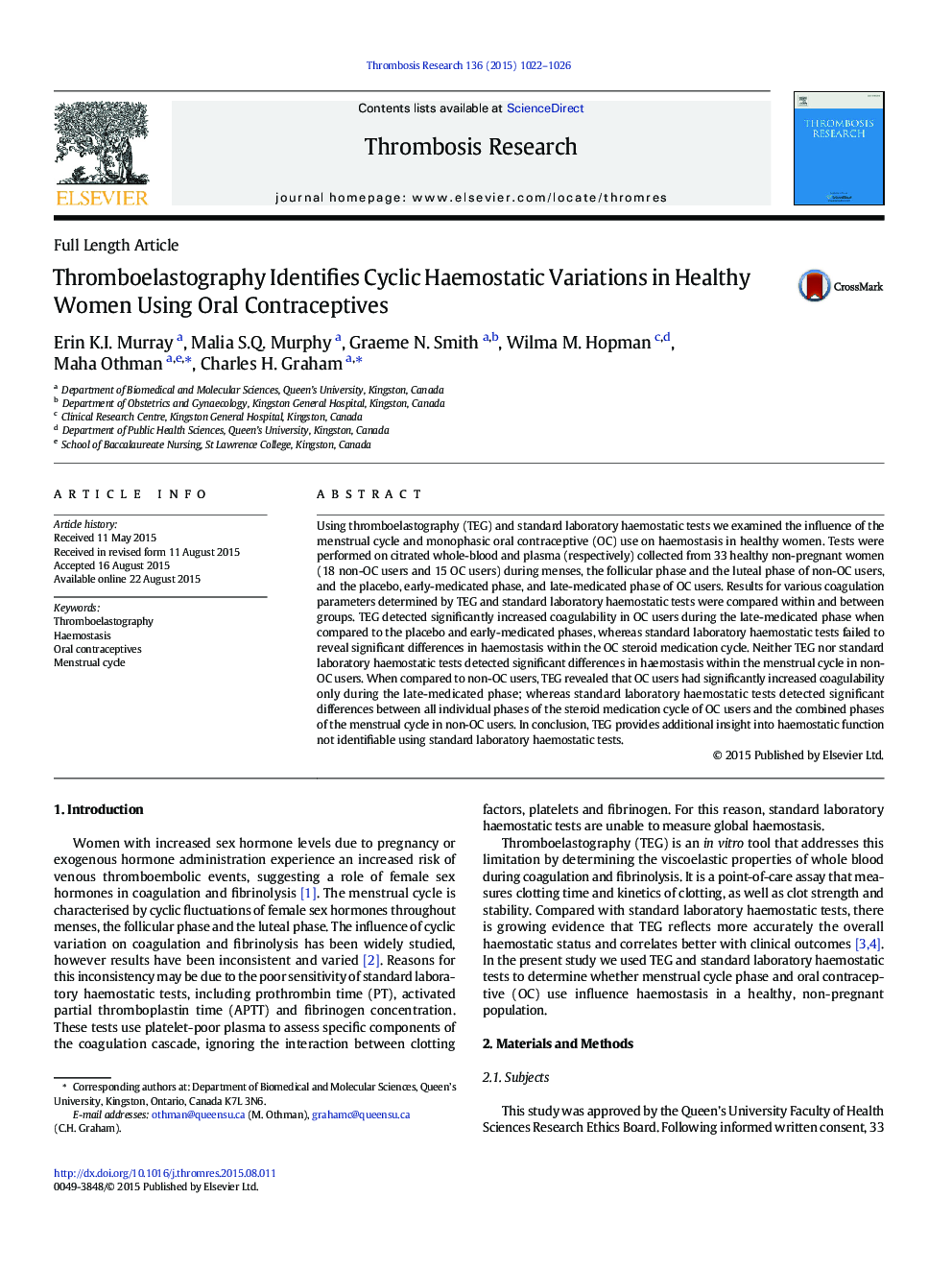| Article ID | Journal | Published Year | Pages | File Type |
|---|---|---|---|---|
| 6000642 | Thrombosis Research | 2015 | 5 Pages |
â¢Thromboelastography (TEG) but not standard laboratory haemostatic tests, detected significantly increased coagulability in oral contraceptive (OC) users during the late-medicated phase when compared to placebo and early-medicated phases.â¢Neither TEG nor standard tests detected significant differences in haemostasis within the menstrual cycle in non-OC users.â¢This study demonstrates for the first time that haemostatic function varies throughout a single medicated cycle of combined, monophasic OC use.â¢It is important to establish a suitable reference for haemostasis, when interpreting haemostatic abnormalities in females on OC.
Using thromboelastography (TEG) and standard laboratory haemostatic tests we examined the influence of the menstrual cycle and monophasic oral contraceptive (OC) use on haemostasis in healthy women. Tests were performed on citrated whole-blood and plasma (respectively) collected from 33 healthy non-pregnant women (18 non-OC users and 15 OC users) during menses, the follicular phase and the luteal phase of non-OC users, and the placebo, early-medicated phase, and late-medicated phase of OC users. Results for various coagulation parameters determined by TEG and standard laboratory haemostatic tests were compared within and between groups. TEG detected significantly increased coagulability in OC users during the late-medicated phase when compared to the placebo and early-medicated phases, whereas standard laboratory haemostatic tests failed to reveal significant differences in haemostasis within the OC steroid medication cycle. Neither TEG nor standard laboratory haemostatic tests detected significant differences in haemostasis within the menstrual cycle in non-OC users. When compared to non-OC users, TEG revealed that OC users had significantly increased coagulability only during the late-medicated phase; whereas standard laboratory haemostatic tests detected significant differences between all individual phases of the steroid medication cycle of OC users and the combined phases of the menstrual cycle in non-OC users. In conclusion, TEG provides additional insight into haemostatic function not identifiable using standard laboratory haemostatic tests.
